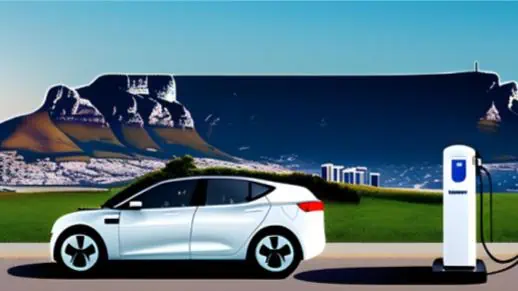In recent years, the global automotive industry has witnessed a significant shift towards electric vehicles (EVs) as a means to combat climate change and reduce dependency on fossil fuels. The Joule, a before its time South African designed electric vehicle never made it to market, and now Tesla, with its cutting-edge technology and sleek designs, has been at the forefront of this revolution. However, when we turn our attention to South Africa, a country known for its unique challenges and automotive market dynamics, it becomes evident that electric vehicles have yet to make substantial inroads. This article explores the reasons behind this phenomenon.
Infrastructure and Charging Challenges
One of the primary hurdles facing electric vehicles in South Africa is the lack of a comprehensive charging infrastructure. While developed countries have made substantial investments in building charging networks, South Africa lags behind in this regard. The scarcity of charging stations makes it inconvenient for potential EV buyers to top up when needed.
Moreover, erratic power supply and frequent load shedding in South Africa have raised concerns about charging reliability. To overcome this, many potential buyers remain sceptical of investing in electric vehicles, fearing that they may face difficulties in keeping their vehicles charged.
The initial cost of purchasing an electric vehicle is significantly higher than that of traditional internal combustion engine (ICE) vehicles. High import taxes, duties, and the weak South African Rand exacerbate this issue. Additionally, the limited availability of government incentives or rebates for electric vehicles, unlike many Western countries, further discourages potential buyers.
South Africa’s vast landscapes and long distances between cities contribute to range anxiety among potential EV buyers. While certain electric models offer competitive ranges, the perception that electric vehicles may not comfortably handle cross-country trips still prevails. It seems that the long distances travelled in South Africa will be part of the challenge until the charging infrastructure improves and range anxiety is alleviated. Consumers generally want a vehicle which can travel long distances, however the reality is that the daily commute is less challenging.
Tesla, though globally recognized as a pioneer in electric vehicles, faces challenges in terms of brand recognition and familiarity in South Africa. Traditional automakers have long dominated the market, and consumers tend to stick with what they know. The lack of a Tesla manufacturing plant in South Africa means that these vehicles are imported, adding to their overall cost and potentially discouraging potential buyers. This is the case for all brands who are importers, and may not be a limiting factor as much as the type of vehicle.
Economy and Government Regulations
The South African economy faces various challenges, including high unemployment rates and income inequality. As such, the market for high-end electric vehicles remains relatively niche. Most consumers prioritise affordability and practicality over luxury when choosing a vehicle, making it difficult for premium EVs to gain traction in the market as the passenger vehicle sales in South Africa would suggest. Would it be the case for delivery vehicles and taxis?
Government policies play a pivotal role in shaping the automotive landscape. South Africa’s regulatory environment has been slow to adapt to the electric vehicle revolution. The absence of clear incentives for electric vehicle manufacturing and adoption, such as reduced taxes or toll fees, inhibits uptake for these eco-friendly options.
While electric vehicles have made significant strides globally, South Africa presents a unique set of challenges that hinder their widespread adoption. From inadequate charging infrastructure to economic factors and government policies, a combination of factors contributes to the limited success of EVs in the South African auto market. To foster greater EV adoption, South Africa needs to invest in charging infrastructure, provide incentives for buyers, and raise awareness about the benefits of electric vehicles. Only then can the country hope to accelerate its transition toward a greener, more sustainable automotive future.
